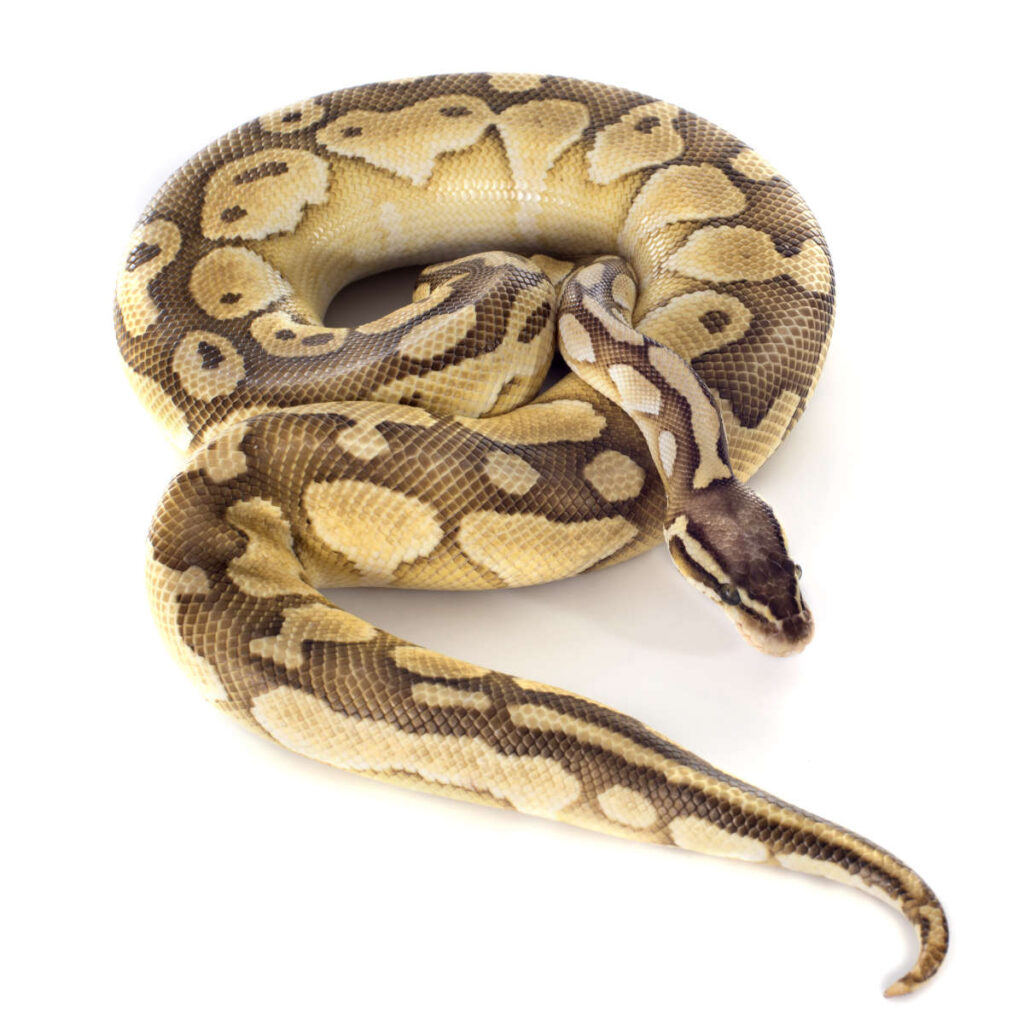Last Reviewed and Updated on July 19, 2022
When it comes to snakes, pythons are one of the most well-known species. Their methods of subduing prey have been an inspiration for many movies, although this ability is often exaggerated when it comes to movies. Learn some of the most fun facts about pythons, from their hunting habits to their parenting.

1. All pythons are non-venomous
Starting off this list of facts about pythons is that you don’t really have to fear a python’s bite, at least not from the venom side of things. They may look scary, and some certainly are dangerous, but at least all pythons are non-venomous snakes. This also means they don’t have fangs. They do still have other sharp teeth and can bite.
2. There are 42 known species of pythons
There are 42 different species of pythons spread across sub-Saharan Africa, Nepal, India, Bangladesh, Shri Lanka, Southeast Asia, southern China, southeastern Pakistan, the Philippines, and Australia.
One species, the Burmese pythons, also live in the Everglades National Park in the United States as an invasive species.
3. Most pythons are ambush predators
Most pythons are ambush predators. They will wait motionless in a position that is well camouflaged and wait for their prey to move past them. When the prey is in striking distance, a python will strike at its prey.
4. They kill their prey with constriction
Once they grab hold of their prey, they will wrap around it and subdue and kill it.
5. They don’t crush their prey to death
It is a popular myth that pythons wrap around their prey and crush it to death, but this is not the case. A python will wrap around its prey and constrict it, shutting off blood flow to vital organs, which leads to the prey first falling unconscious and dying soon after.
A python monitors the heartbeat of its prey to determine when it is dead.
5. Pythons swallow their prey whole
Larger species of pythons usually hunt and eat animals the size of a house cat but have been observed tackling larger prey as well. The African rock python, for example, has been known to eat antelope. No matter the size, these animals swallow their prey whole.
It can take days or even weeks for pythons to fully digest their meal.
7. Pythons lay eggs
When it comes to snakes, 70% of species lay eggs, and 30% give live birth. All species of python snakes lay eggs,
8. During the incubation period, the female python doesn’t eat
This is one of the most interesting facts about pythons. Python eggs need to be kelt at a constant temperature so the female pythons will incubate their eggs. One of the ways they raise the temperature is, by shaking their muscles, which raises their body temperature and helps keep the eggs warmer. A female python won’t eat during incubation and won’t leave the nest unless she goes to bask in the sun to raise her body temperature.
9. Reticulated Python is the largest, pygmy python is the smallest species
The reticulated python is the world’s longest snake and one of the heaviest. On average, it reaches lengths of about 4 ft 11 to 21 ft 4 in / 1.5 to 6.5 m but can be quite a bit longer too.
The pygmy python is the smallest of all pythons, with adults measuring about 19.5 inches / 50 cm in length.
10. Sukuma People of Tanzania use python feces to treat back pain
Python body parts, blood, and feces have been and still are used in the traditional medicine of some cultures. Some use is completely bogus, while some aren’t.
